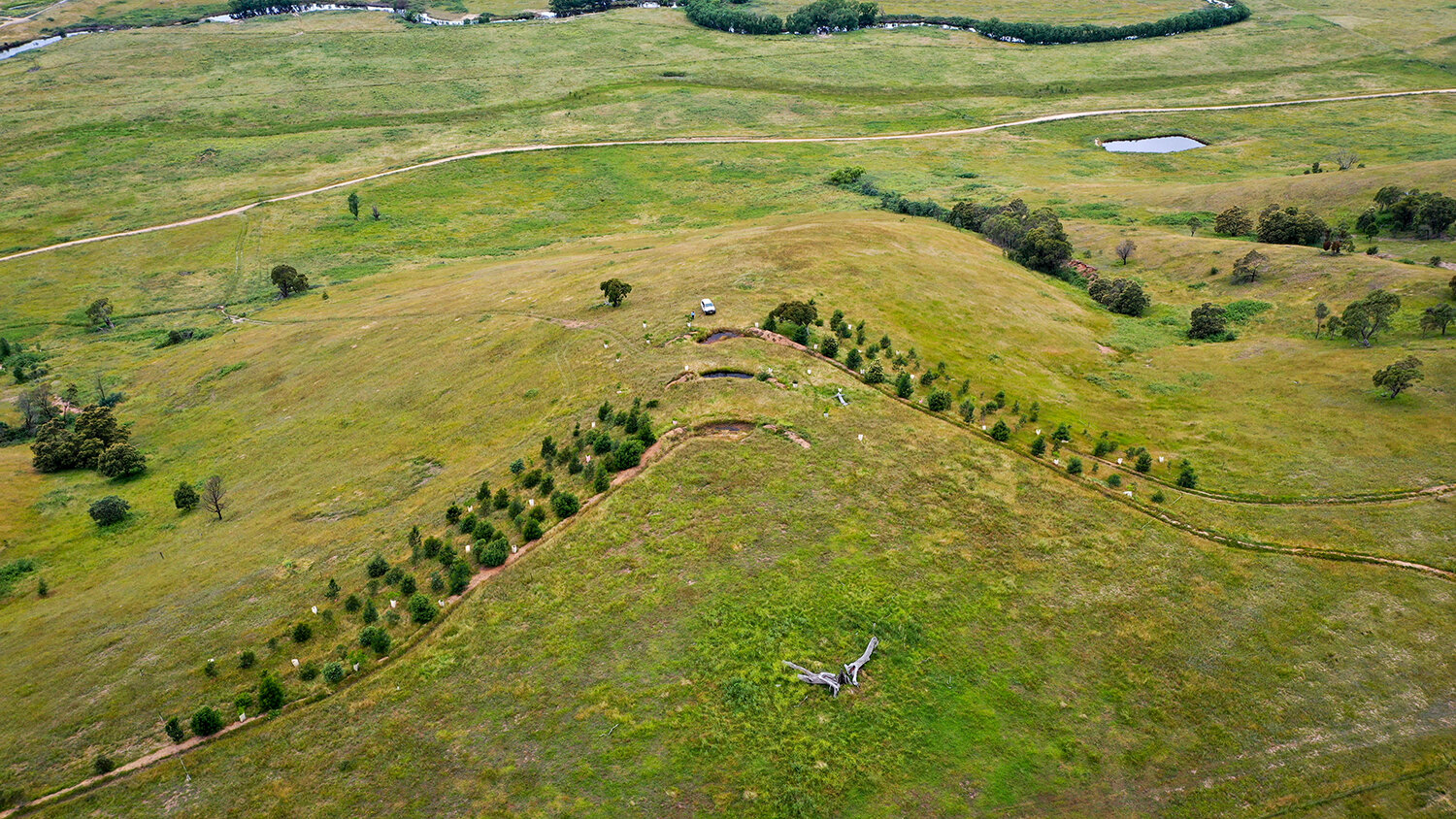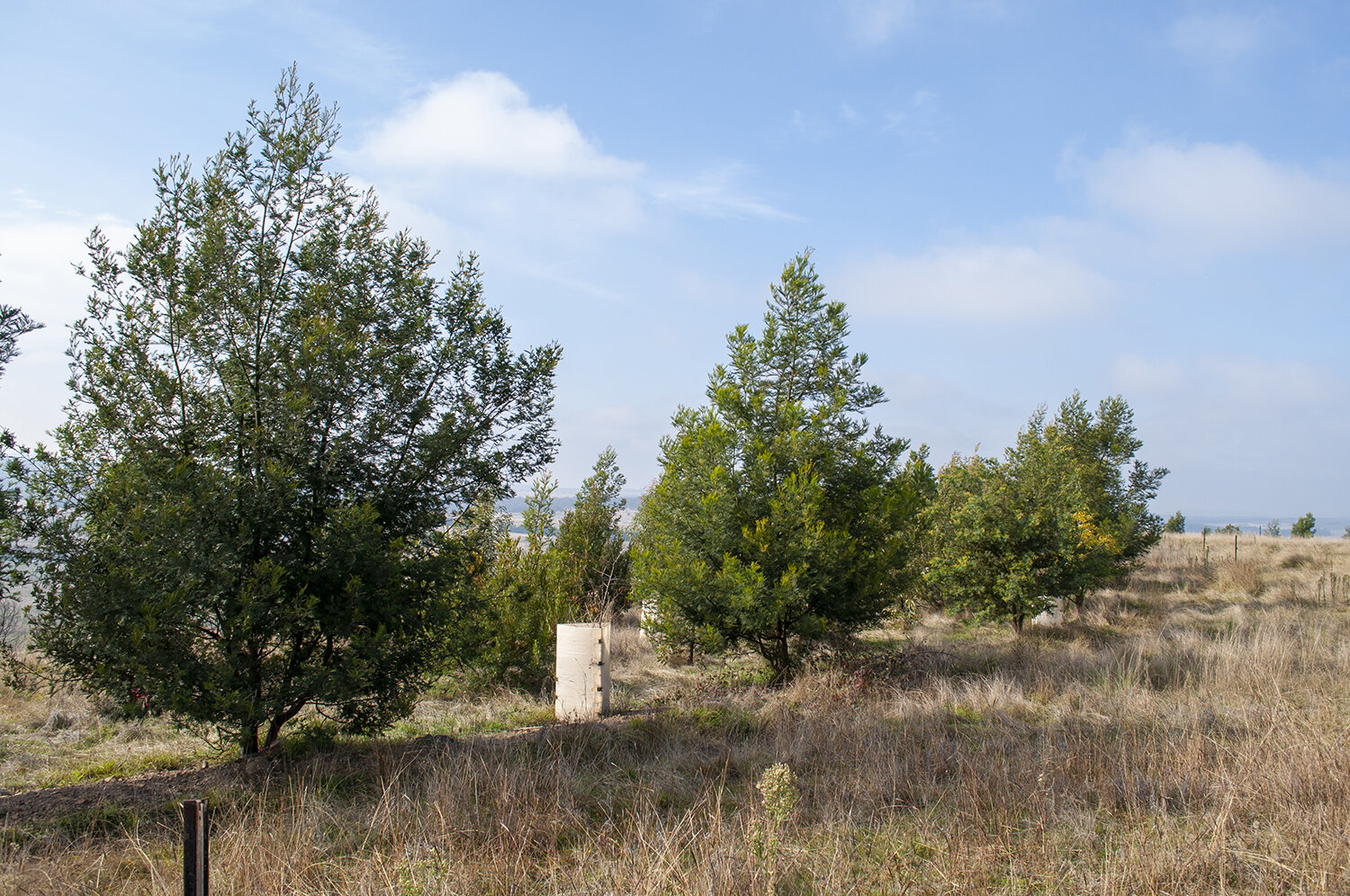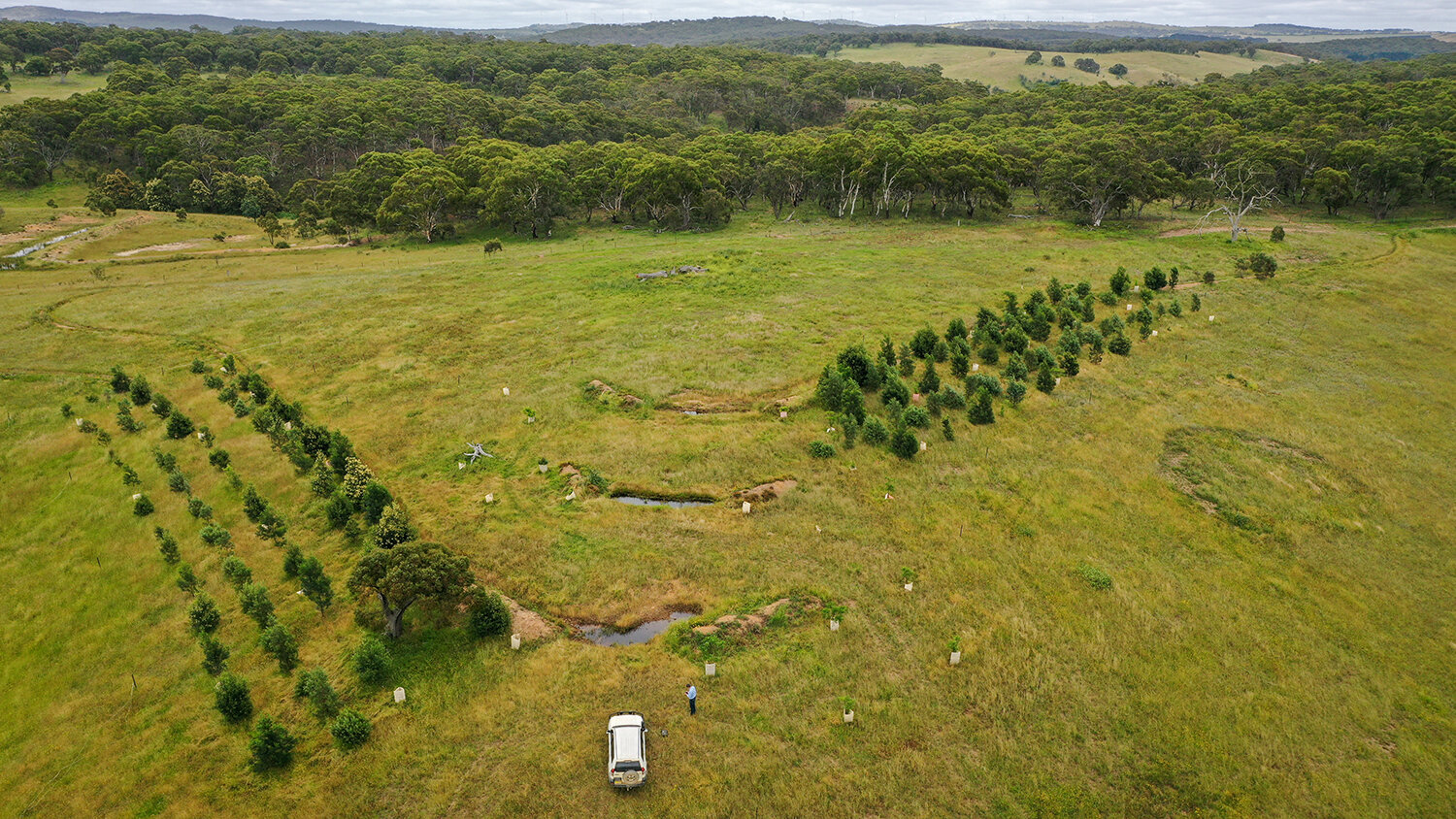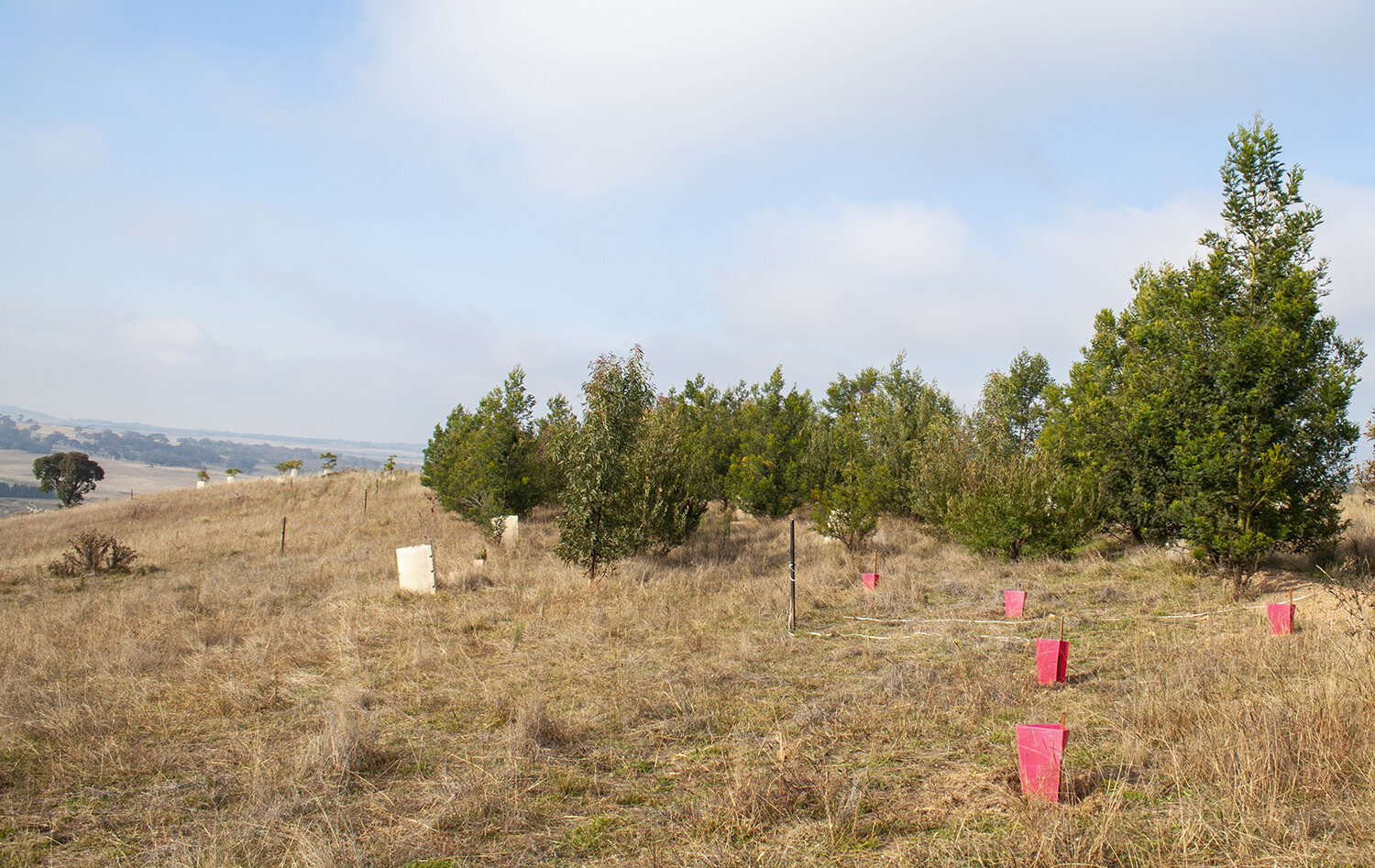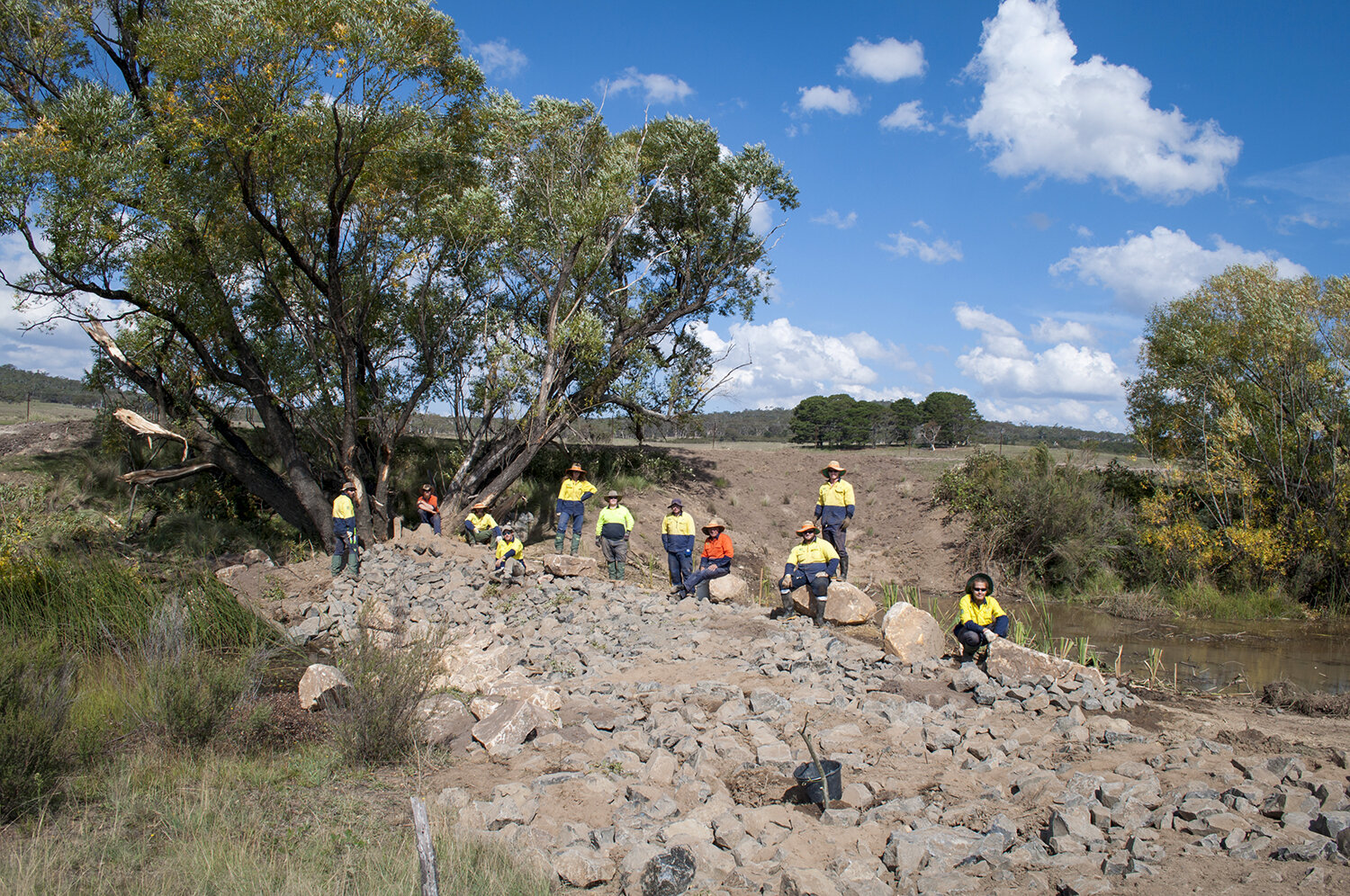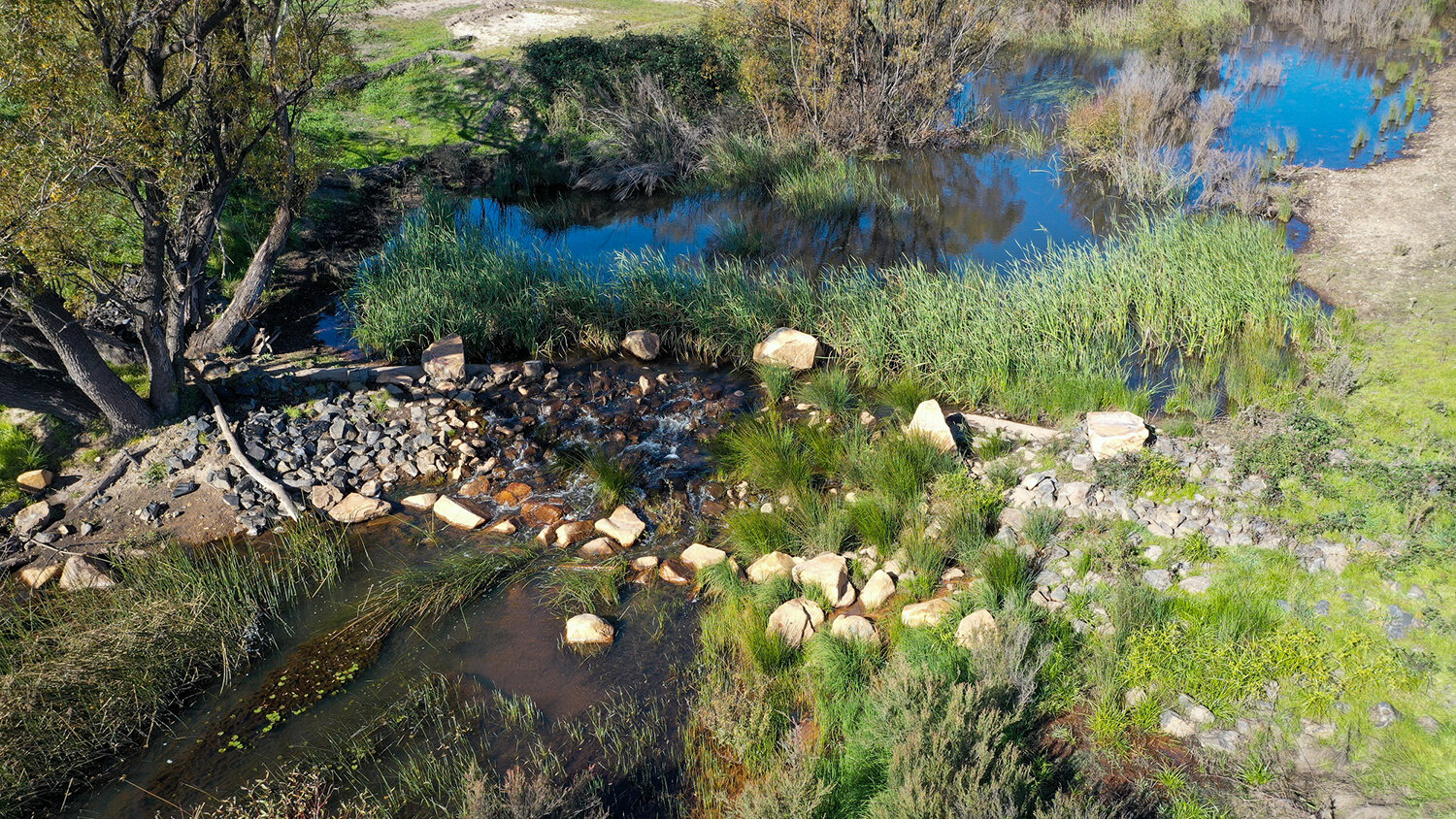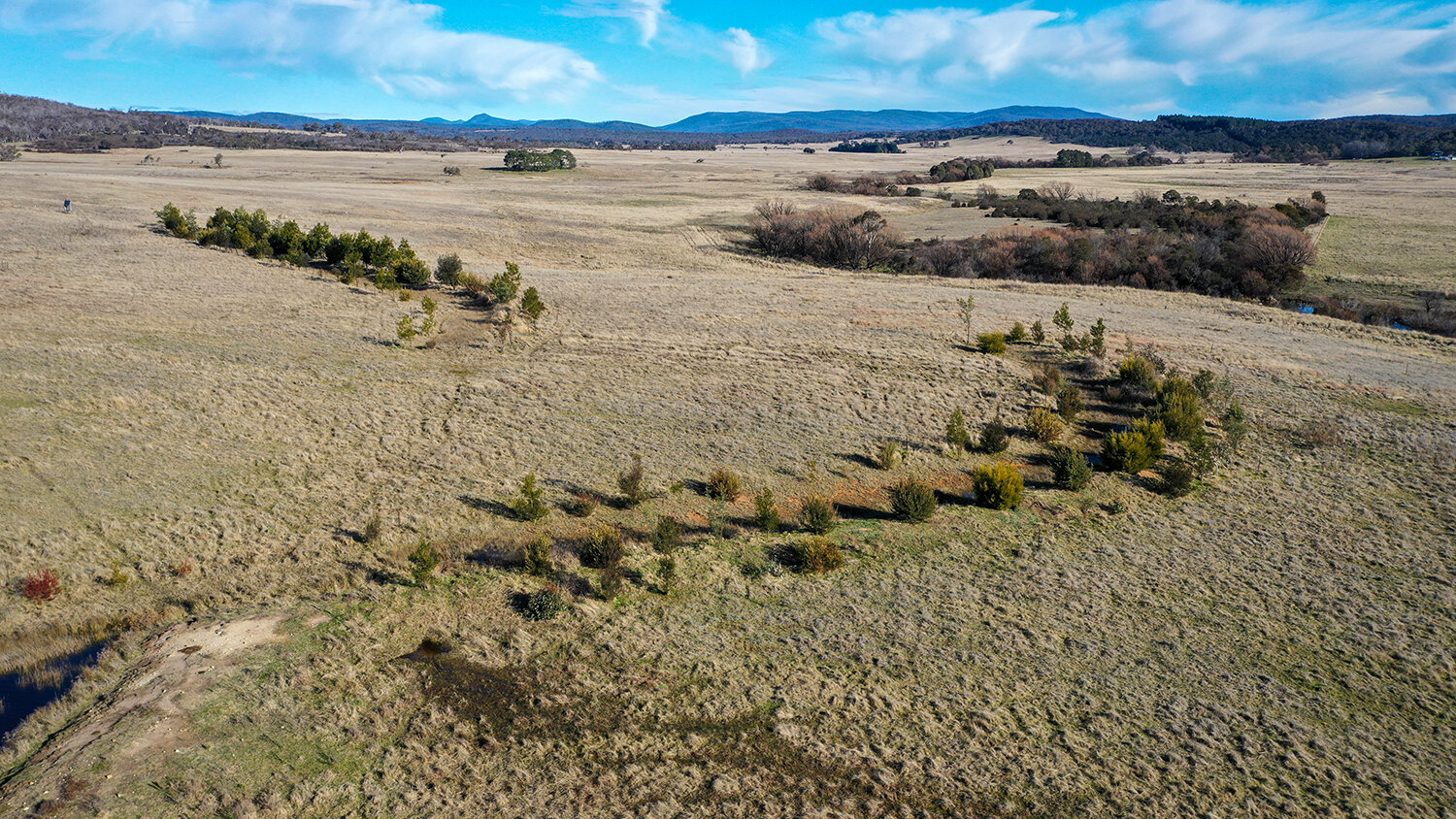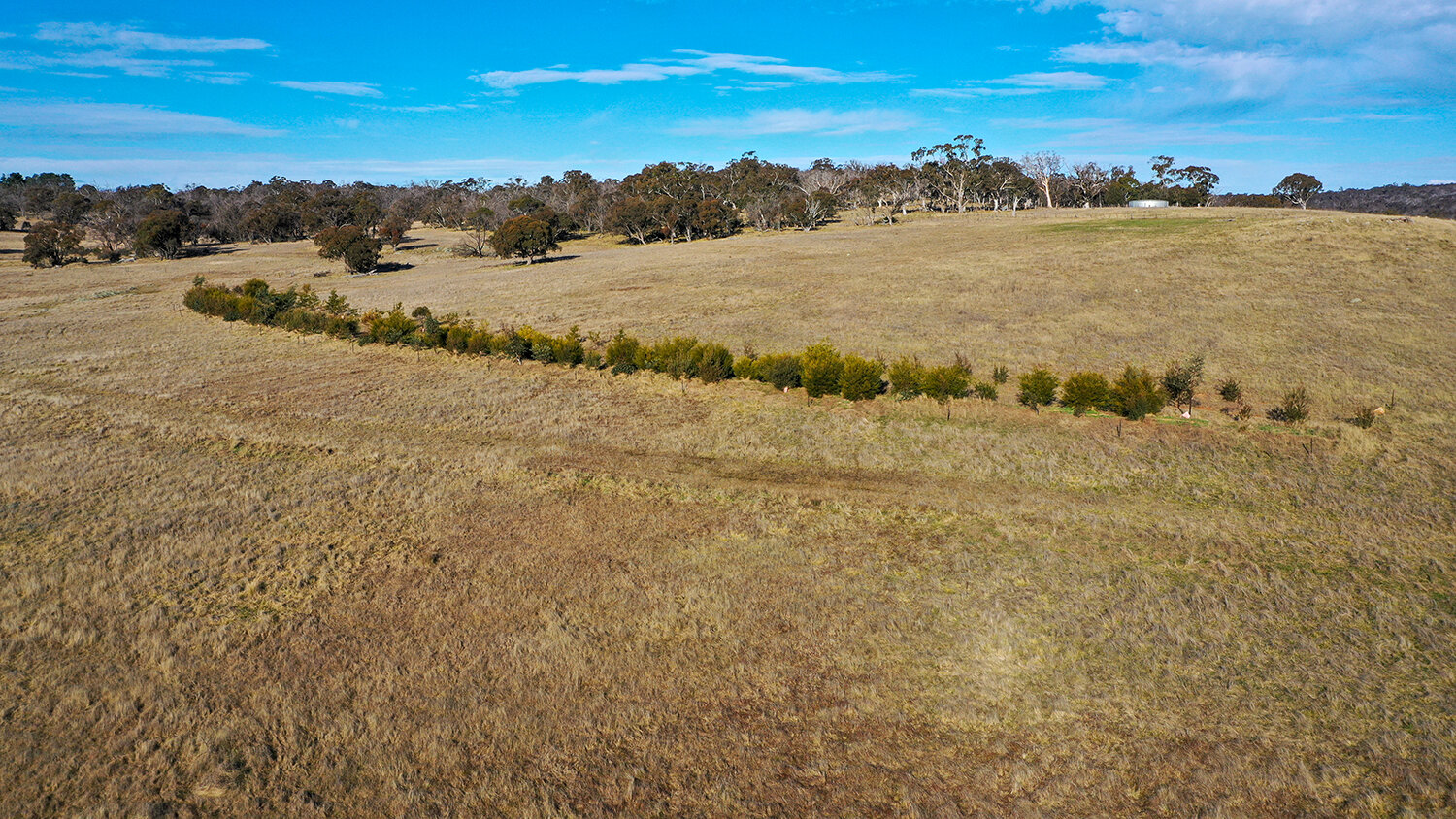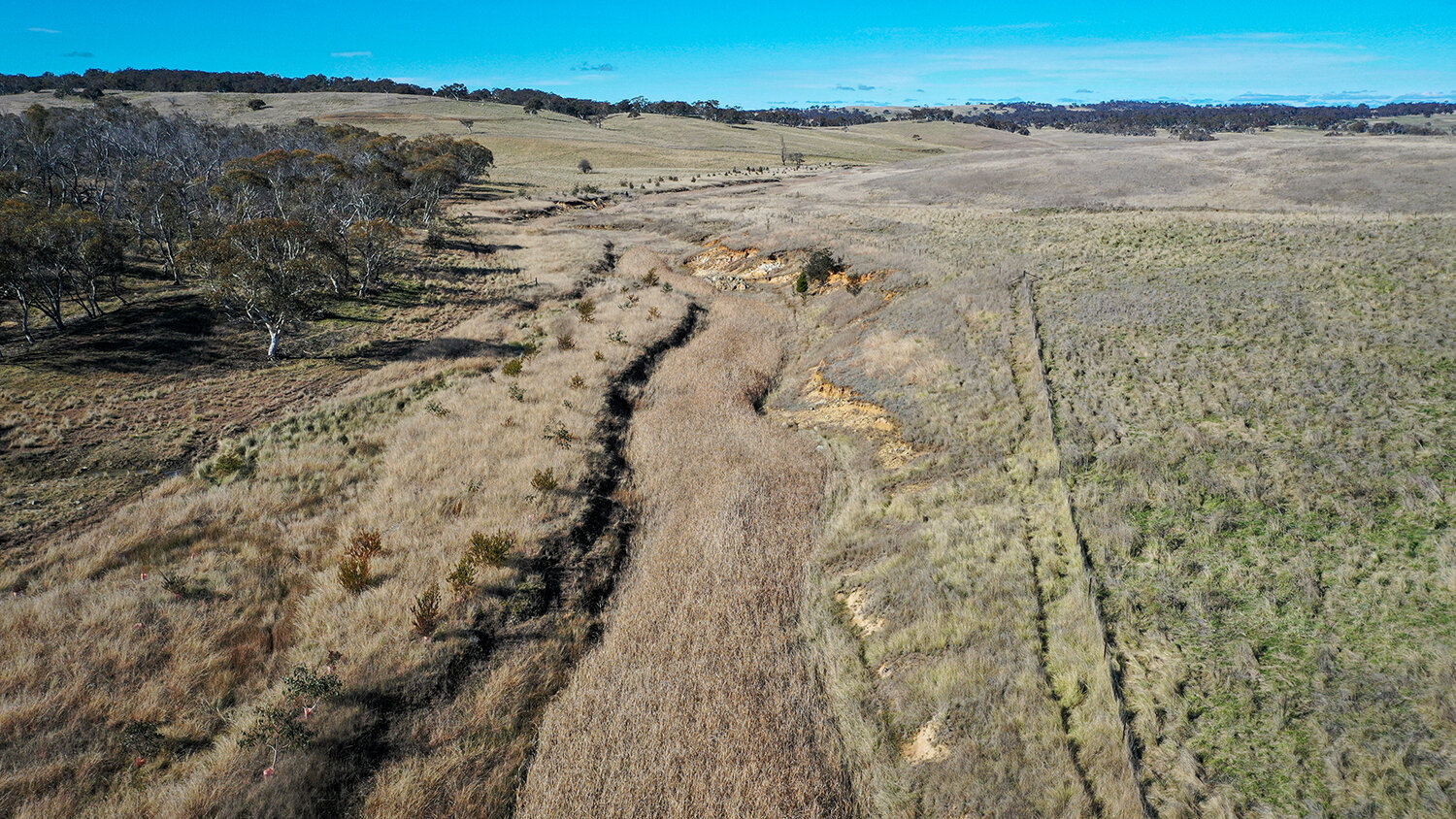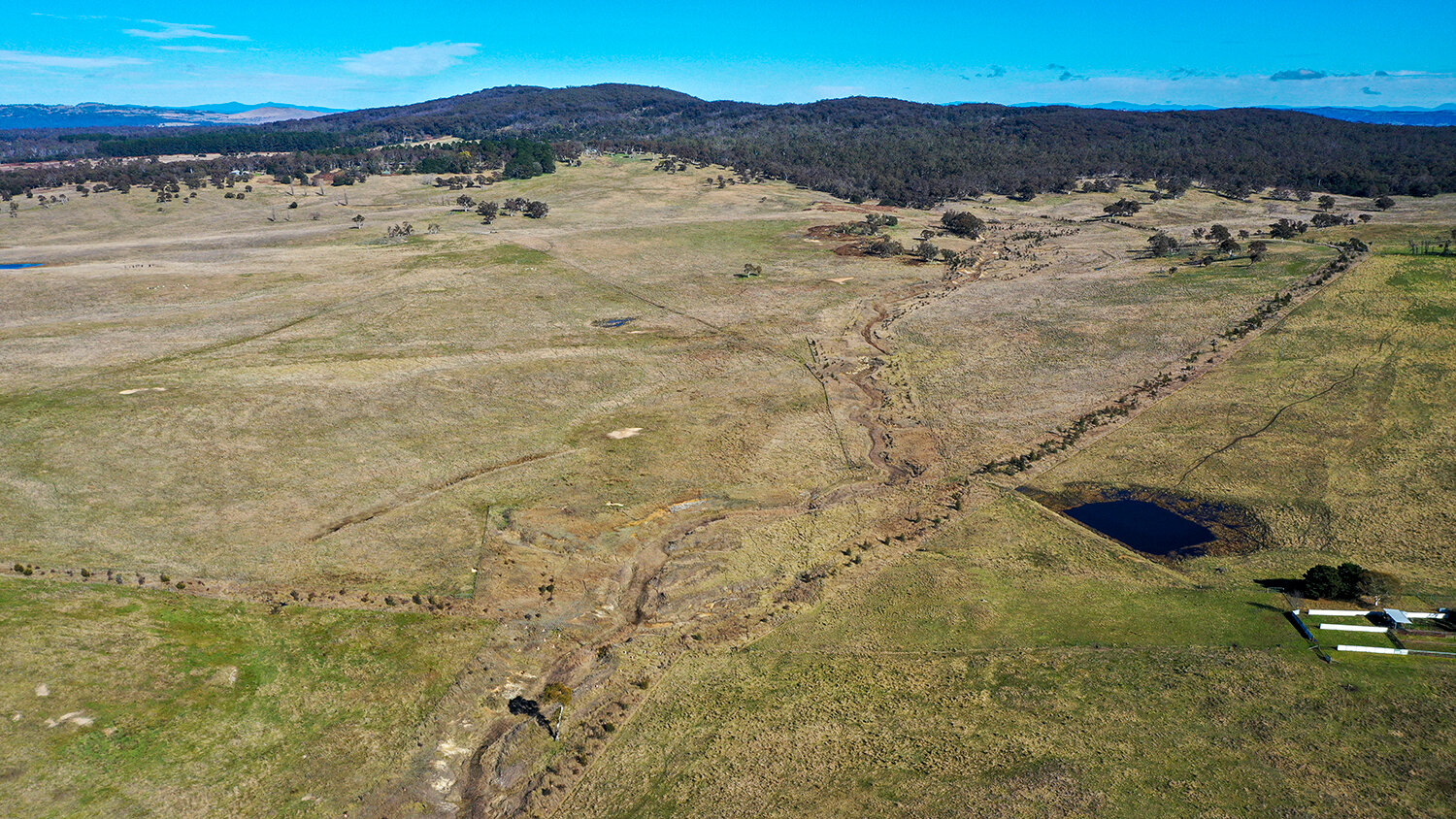One of the first projects the Mulloon Institute undertook as part of the Mulloon Rehydration Initiative (MRI) was the ‘Mulloon habitat restoration for threatened species’ project to plant 12,000 trees at ten sites across five properties.
This tree planting work was funded by the Australian Government’s 20 Million Trees Program, while the Mulloon Rehydration Initiative is jointly funded through the Mulloon Institute and the Australian Government’s National Landcare Program. The initiative is also assisted by the NSW Government through its Environmental Trust.
The 20 Million Trees Program was established in 2014 with the aim of planting 20 million trees by 2020 to re-establish green corridors, urban forests and threatened ecological communities. By October 2020 that target had been exceeded, with approximately 27.1 million trees successfully planted.
Environmental Outcomes
The 20 Million Trees project has contributed significantly to the goals of the MRI with the planting work rejuvenating wildlife corridors on the mid slopes and riparian areas as well as the wetlands.
Several rare and threatened bird species have benefited from this work including: Flame Robin, Scarlet Robin, Red-capped Robin, Eastern Yellow Robin, Diamond Firetail, Latham’s Snipe, Restless Fly Catcher, Azure Kingfisher, Dusky Woodswallow, Red-browed Finch and White winged Triller.
Fencing from livestock and revegetation of the riparian zones and ponds has also recreated valuable frog habitat, the quality of which is so high that Taronga Zoo is trialling the re-introduction of the captive bred Yellow-spotted Bell Frog, which is currently extinct in the wild.
Social Outcomes
This 20 Million Trees project has made a key contribution to the social goals of the MRI and has proven to be a foundational pillar of the initiative.
Participating landholders are visibly happy with the aesthetic and environmental outcomes and many thousands of native plants continue to be planted by volunteers throughout the Mulloon catchment. The outcomes keep building and the results are regularly shared with Landcare and farmer group and high school and university students via field days and site visits.
Economic Outcomes
It is always hard to define the economic outcomes of such a project. Indeed the broader MRI is subject to economic benchmarking. Variables such as pasture biomass are being measured to assess the impact of a rehydrated floodplain and changed grazing management on the landholders’ bottom line. However, the key economic variable relating to revegetation and an improved creek aesthetic must be in the capital value of the land itself. Such a variable is not really measurable until the land is sold. However, real estate agents do say that buyers will pay more for land that has trees on it and healthy waterways.
More trees have been planted than was in the original plan. With losses this number was still higher. This project has kick started a significant tree planting program within the Mulloon catchment associated with the MRI. Since the 20 Million Trees program was completed at least as many trees again have been planted. Plus, with the fencing of riparian areas, the natural regeneration of native vegetation is accelerating.
